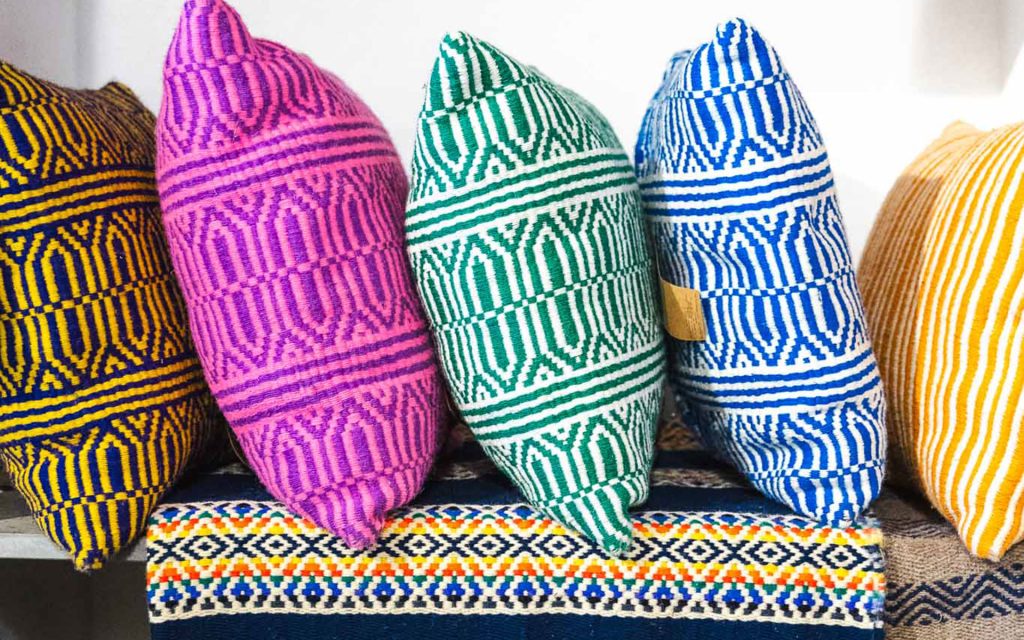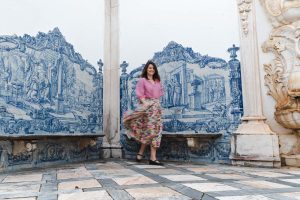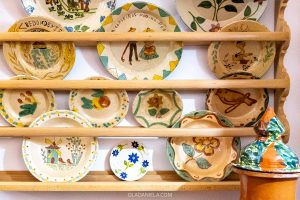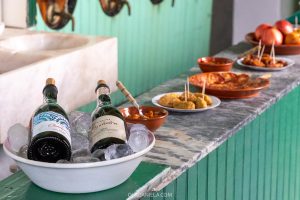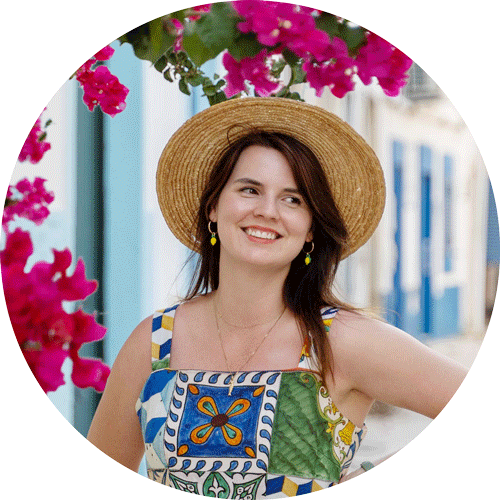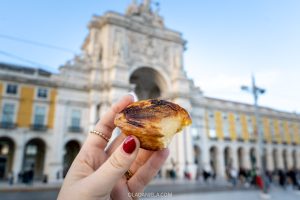I love meeting local artisans, watching them work, and hearing their stories. Here in Portugal, I regularly visit craft fairs and workshops to meet the people who work with their hands, often continuing a family trade many generations in the making.
One Portuguese region that stands out for its strong traditional crafts and artisans is the Alentejo, the region east and south-east of Lisbon. Here time moves a little slower and these craftspeople have the space and support to continue their work. Of course, we’re at a point where many of these crafts that once sustained families – like basket weaving and clay pots – are no longer needed, and younger generations don’t wish to continue on the same path.
But there are still active workshops where you can connect with artisans, learn about Portuguese heritage, and give value to the trade. From pottery to rug weaving to olive oil to Portugal’s last cowbell makers, here are some of the artisans and traditional crafts you can connect with in the Alentejo.
Contents
ToggleChocalhos Pardalinho – the last of the cowbell makers
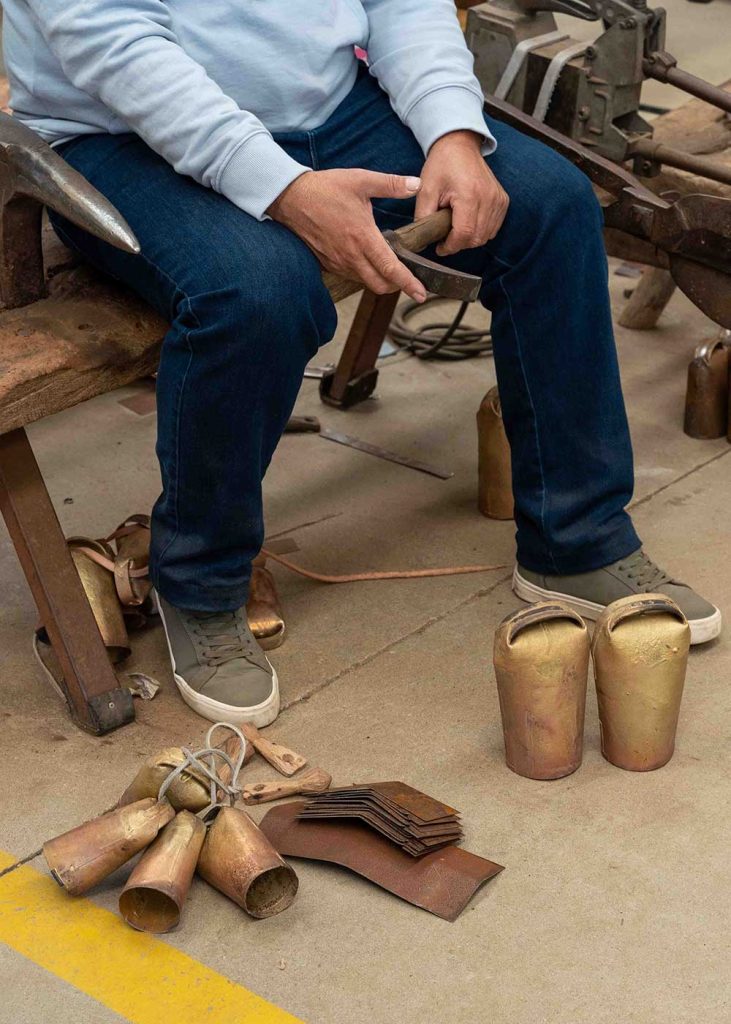
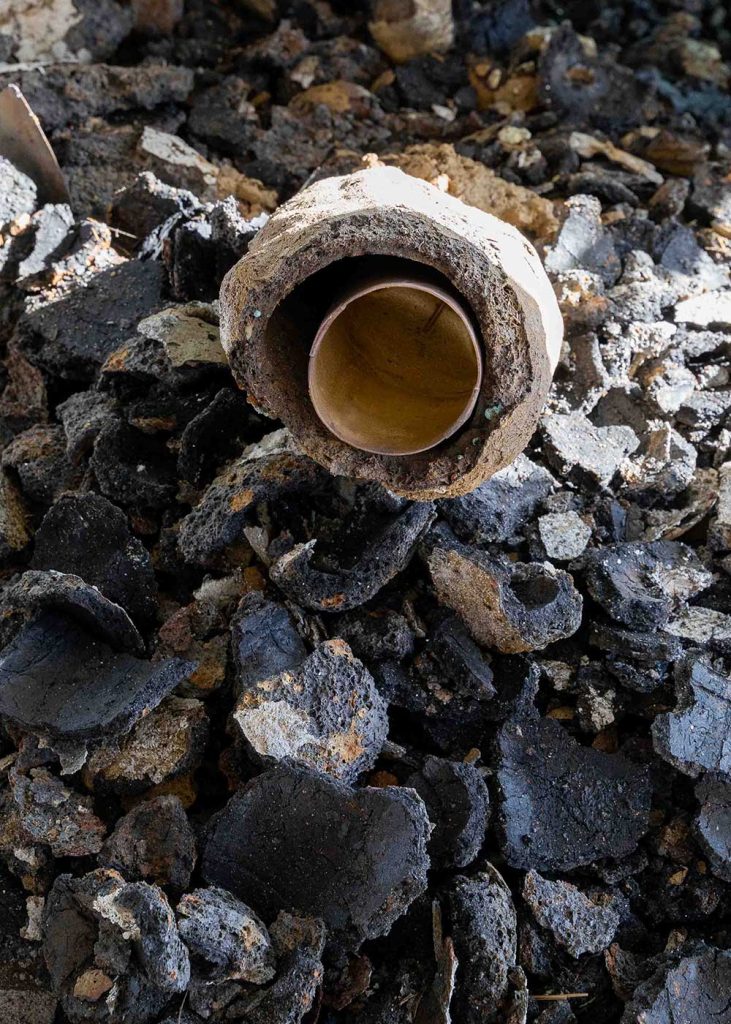
The soundtrack to the Alentejo is still the gentle ding, ding, ding of cowbells. The making of cowbells is a surprisingly complex craft, traditionally passed from father to son. It has a long history in the village of Alcáçovas, south of Évora. Here you can visit Chocalhos Pardalinho to explore the art.
I was not expecting much – cowbells are just a sheet of metal, right? – but I was truly mesmerised by the complex, manual process of making and tuning these artisanal bells. After bending, baking and cooling, each bell is tuned by a master who knows how to create a strong, long and pleasant sound that will travel across the fields.
How to visit: Email ahead or call to organise a visit as this is a workshop.
Olaria Patalim – traditional terracotta pottery in Corval

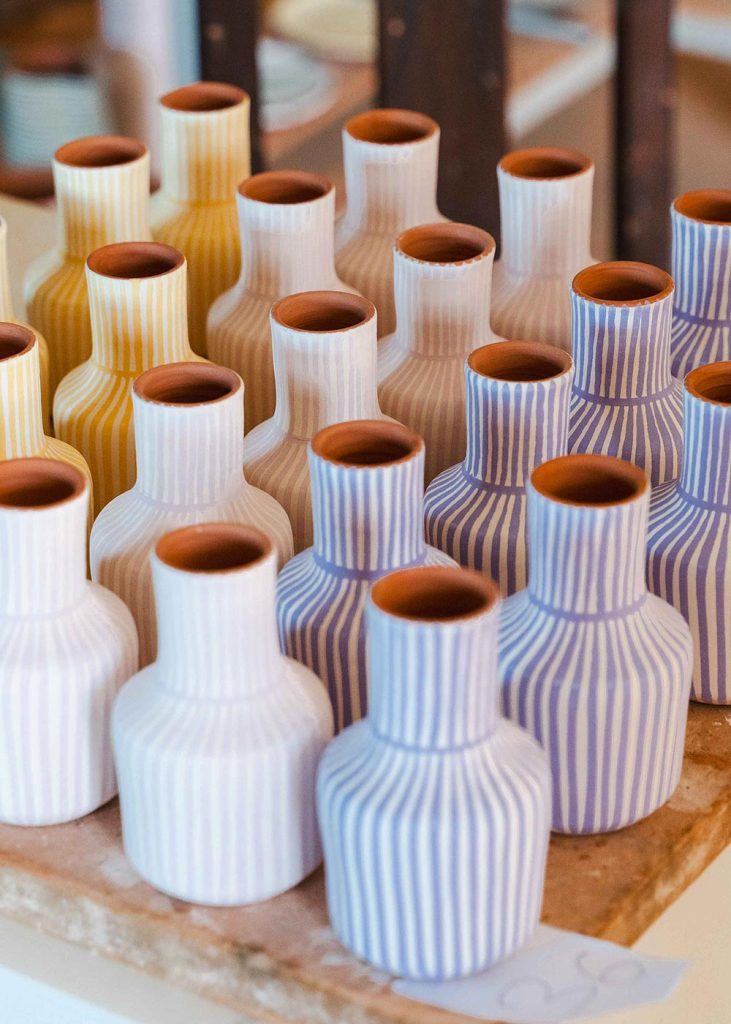
São Pedro do Corval is the largest pottery centre in the Iberian Peninsula. In this village you’ll find 21 pottery houses, each working with terracotta clay to produce traditional Portuguese ceramics. One of the best known family-run terracotta workshops is Olaria Patalim.
Here you can meet siblings Rui (a potter) and Nelia (a painter), who have split the multi-generation family business into two. Each workshop is unique in style yet united by the red clay, spun on wheels in front of you.
How to visit: You can simply drop in during opening hours to shop the retail offering at each workshop and check out the artisanal process.
Other Alentejo pottery towns: The towns of Redondo, Nisa, and Viana do Alentejo also have a rich terracotta pottery heritage that still persists today.
Vila dos Frades – village of Alentejo talha wines
Portugal’s connection to the ancient Roman Empire continues to this day through its talha wines. This method of wine making – using large clay amphorae, or talhas – is a technique that dates back some 2,000 years. The fermentation process takes place entirely in these unlined clay vessels, which allow the wine to breathe and develop unique flavours while maintaining a natural temperature control.
The small Alentejo village of Vila dos Frades is the heart and soul of talha wines. Here these unfiltered wines made with native grape varietals are celebrated by a handful of winemakers.
How to visit: You can venture out to taste talha wines at a handful of cellar doors including Geracões da Talha and Honrado Vineyards
Talha wine day trip: This all-day winery tour from Lisbon takes you to Vila dos Frades where you’ll experience the tavern culture and talha wine traditions.
Bonecos de Estremoz / Estremoz figurines
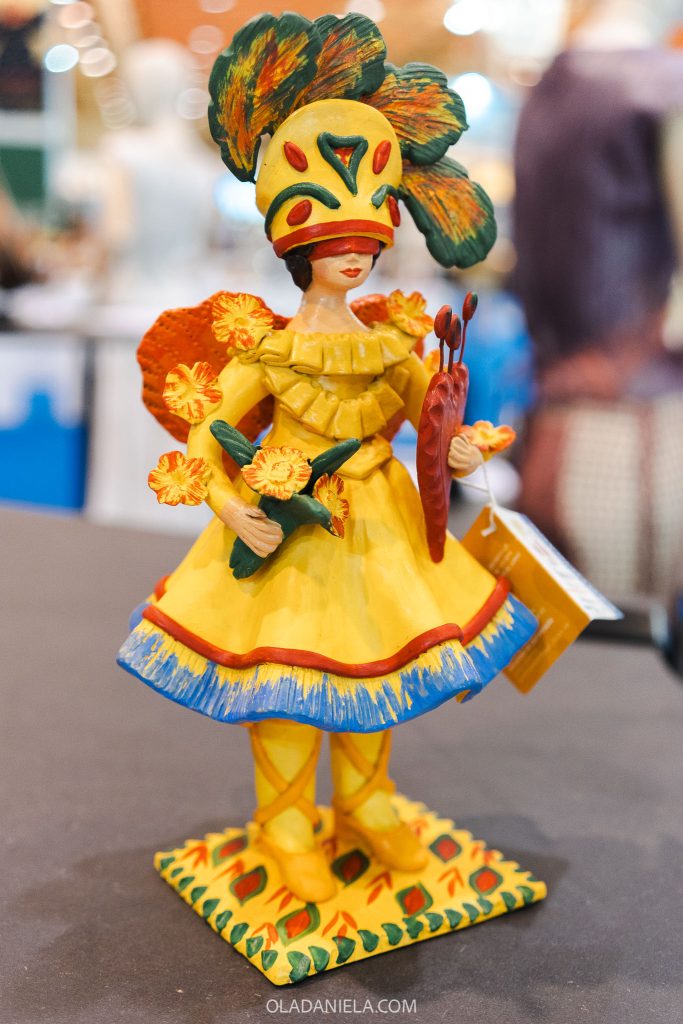
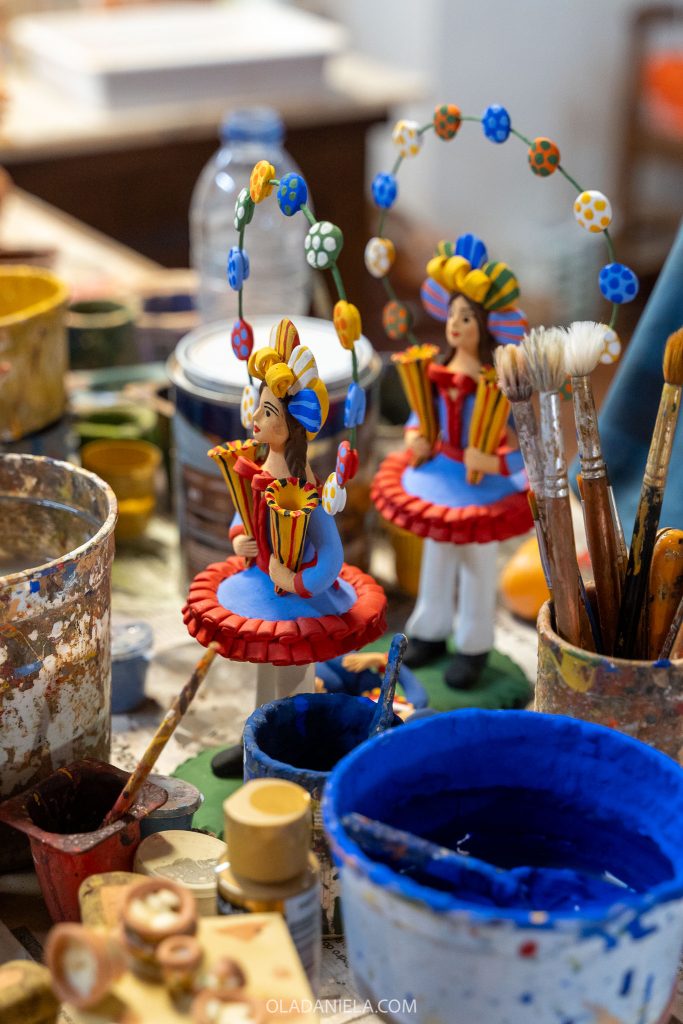
The Alentejo town of Estremoz has a very cute tradition – clay figures. Since the 17th century it’s said women started making saints for their own houses, carved from wood. Clay was cheaper and so the tradition evolved. Now there are about 10 artisans dedicated to this UNESCO World Heritage-recognised craft, and in addition to saints you’ll likely see folk-art-like figurines that reflect life in the Alentejo.
If you want to get to know this craft, start at the town’s Centro Interpretativo do Boneco de Estremoz. This small museum houses more than 100 of the figures with descriptions of past and present makers.
How to visit: Visit the museum, then set out to find a maker. Afonso Ginja has a workshop near the museum, and Irmãs Flores and Ricardo Fonseca share a workspace in the centre that is open as a shop too.
Fabricaal – Alentejo wool rug weaving
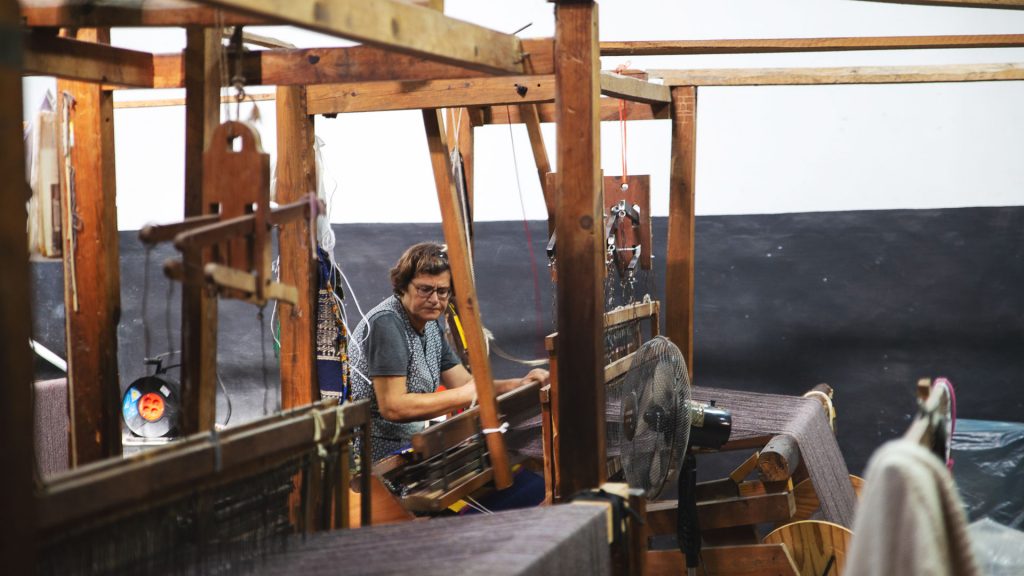
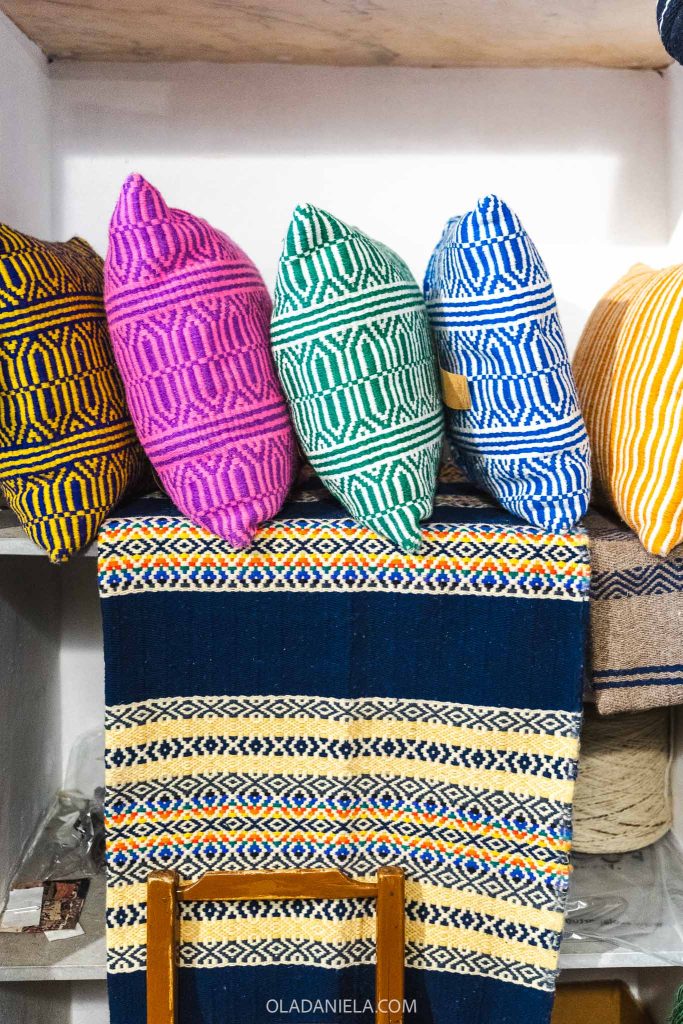
For more than 100 years the women of Reguengos have been weaving rugs in colours inspired by the region’s wildflowers. Their feet dance on four pedals, writing the score for various traditional patterns, while their hands swiftly pull ropes conducting the orchestra of tiny threads shooting back and forth across the loom.
Like all things manual, it can be hard to survive from generation to generation, but new, younger owners took over Fábrica Alentejana de Lanificios a few years ago. They introduced some more minimalist designs and started turning some of the rugs into new products such as pillows, bags, laptop sleeves and pouffes.
How to visit: Email or call to make an appointment for the workshop. The small fee will be taken off if you buy anything in the showroom.
Azeite Marvão – Olive oil museum and factory

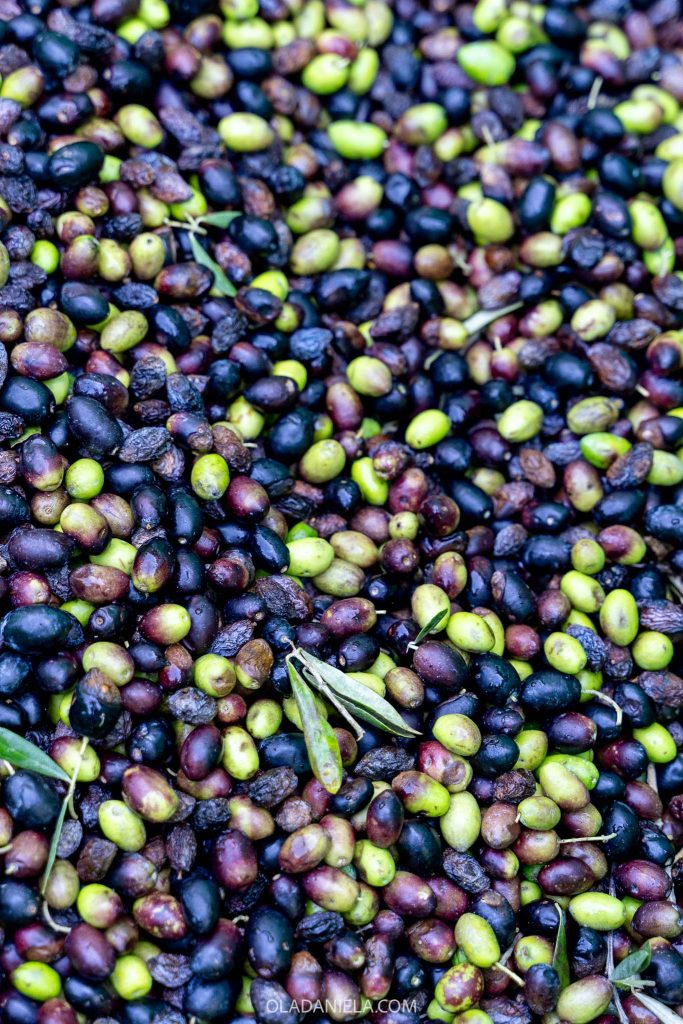
António Melara Nunes’ grandfather opened this olive mill in 1954. Back then the small, sleepy and remote border village of Galegos had more than 500 residents (plus shops, bars, and services). Now just 30 people call it home. The mill closed in 1999, abandoned for a decade before António, who had made a life in Lisbon, returned to his roots. He restored the old mill, turning the vintage machinery into a museum and bringing in new equipment where he processes his organic olives from heritage trees – inviting the neighbours to make their own olive oil there too.
In the old buildings they have a beautiful space to taste the olive oil, and at Azeite Castelo de Marvão a group of us enjoyed an olive farmers’ traditional lunch spread, paired with wines (of course).
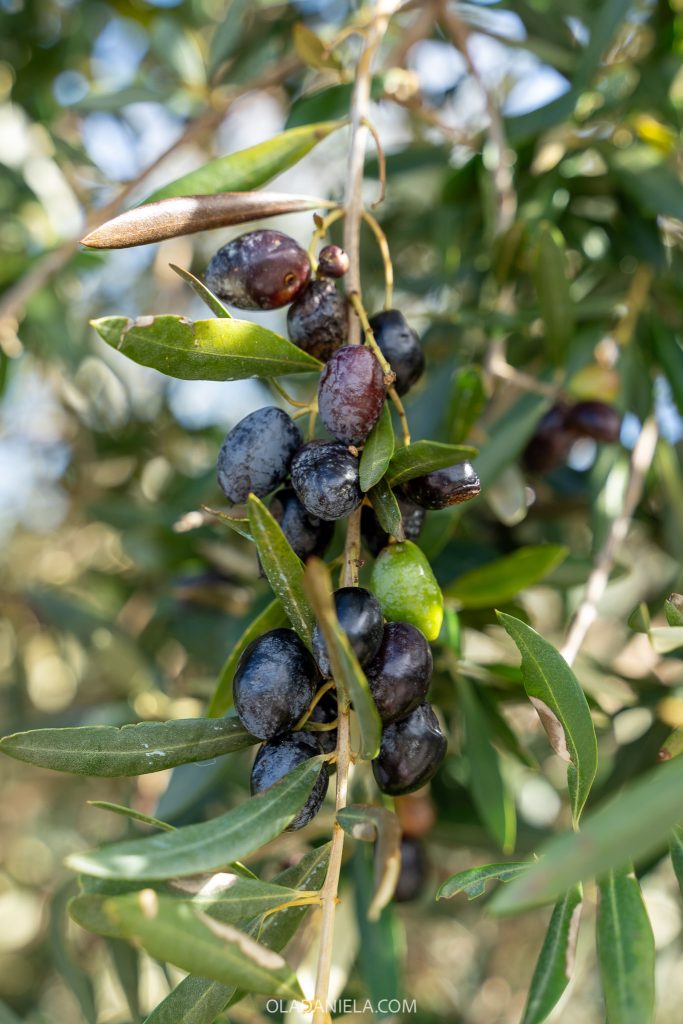
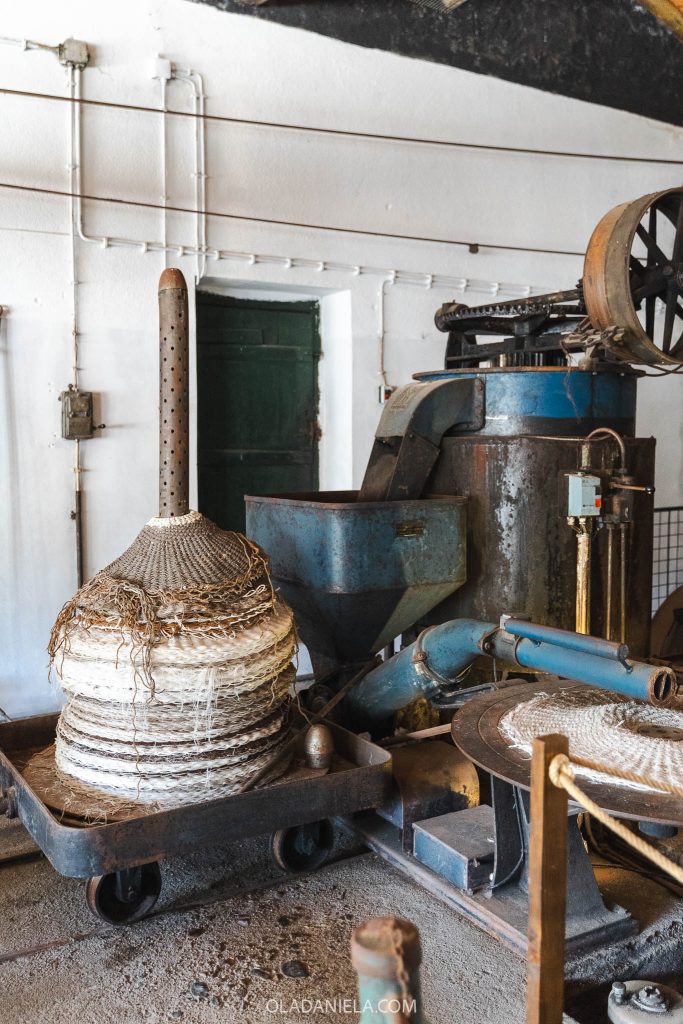
How to visit: email ahead to [email protected] or WhatsApp: +351 93 802 92 50
Botas Alentejanas / Alentejo leather boots
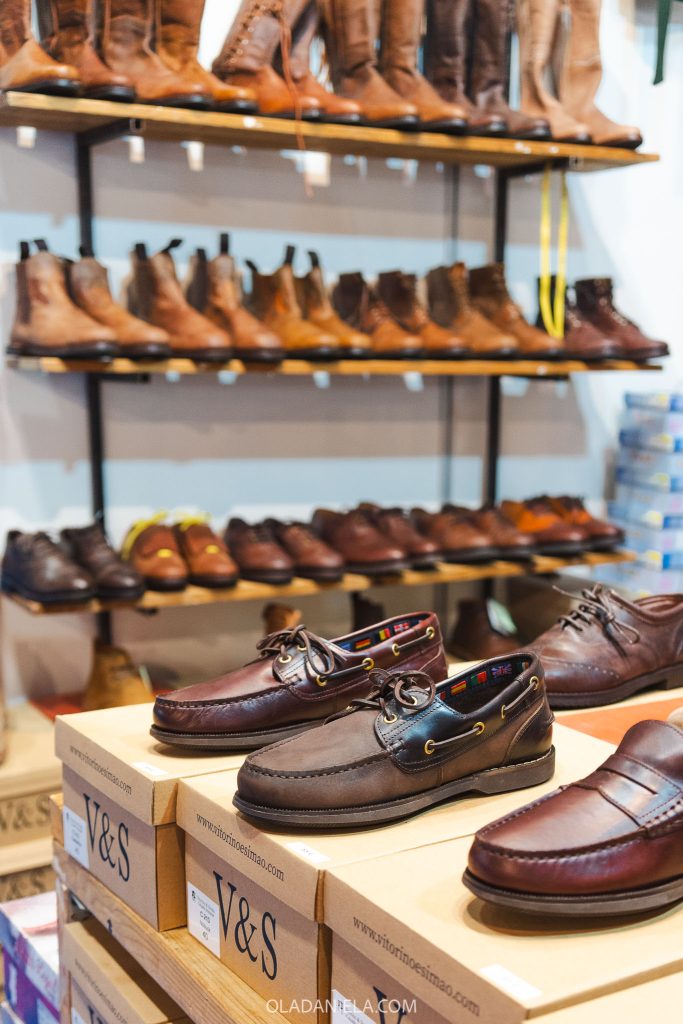
Alentejo boots, or botas alentejanas, are a symbol of the region’s rural heritage, traditionally worn by shepherds and farmers. In the Alentejo a handful of artisans, such as Jerónimo Gaudêncio and Mário João Grilo, still craft beautiful and durable leather shoes. Mário, who makes boots in the town of Cuba, first stepped into a shoemaker’s workshop aged 12 and now has 40 years’ experience doing what he loves.
While the more traditional taller Alentejo boots aren’t exactly on trend, these leather artisans use the same techniques to make high-quality timeless high-top lace-up or pull-on boots at essentially the same price as high street. Yes, made-just-for-you hand-stitched leather boots within your budget.
How to visit: You’ll have to message the makers on Instagram to order direct or see if they pop up at a market. I’m also a fan of Valentim, a third-generation boot maker that is often at the Belém market in Lisbon.
Arraiolos stitched wool rugs
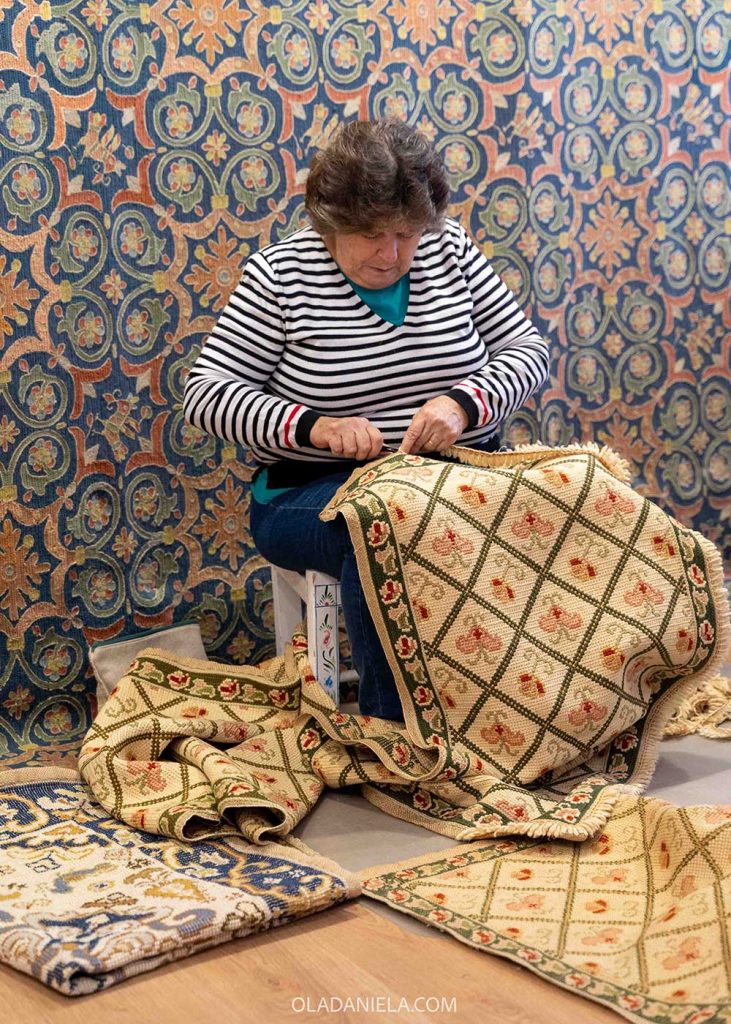
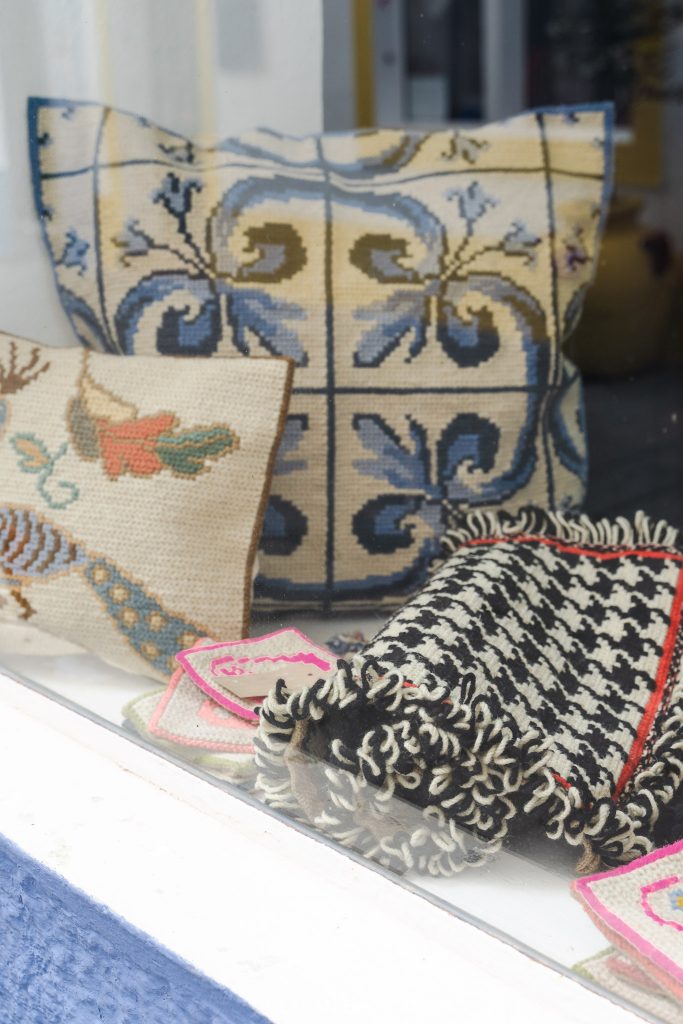
The town of Arraiolos is famous for its rugs. Heavy, cross-stitched carpets that date back many centuries. The origins are a bit of a mystery. The oldest documented reference dates back to 1598, but recent archeological digs uncovered ancient vats used to dye wool, suggesting production dates back much further.
Start at the Centro Interpretativo do Tapete de Arraiolos, a modern museum space that’s easy and quick to digest. Here you can view rugs from the 17th century, some showing much older designs inspired by oriental compositions likely based on rugs imported from Turkey and Persia at the dawn of the modern age. There’s often someone in the museum weaving a rug, so you can see how the stitches work and how manual the process is.
How to visit: After the museum, I’d wander down Rua Alexandre Herculano, the main shopping street in the old town, to visit half a dozen stores dedicated to the artform. You’ll be able to see women hard at work and shop for a full-size rug, or a smaller souvenir.
Day trip from Lisbon: If you’re short on time, you could join this top-rated private full-day tour from Lisbon to explore the rug culture of Arraiolos along with Évora.
Zezinha – Movéis Alentejanos / Alentejo furniture
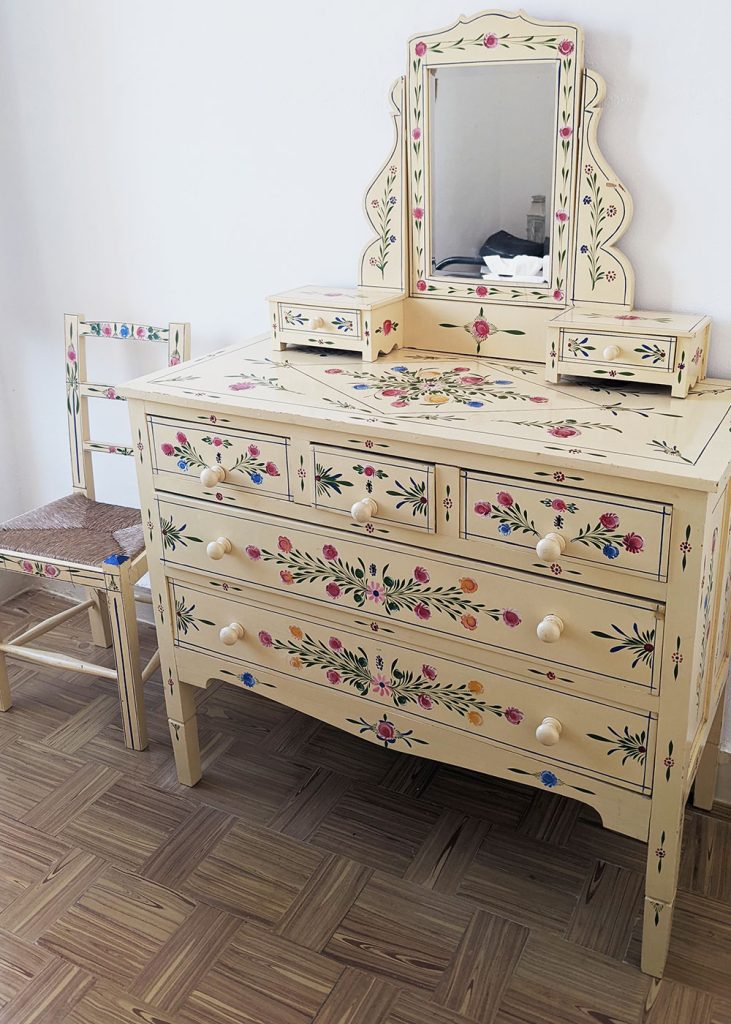

If you stay in a guesthouse with character, you might see traditional Alentejo furniture. These are colourful wooden pieces – beds, wardrobes, dressers etc – hand-painted with Portuguese folk art motifs of flowers and leaves. If you want to take a piece home, you can visit Zezinha’s workshops and store in Redondo. If a dresser is too big, how about a beautiful hand-painted tea chest or serving tray?
How to visit: Drop into Avenida de Gien 5 in Redondo any day except Sunday.
Olaria Xico Tarefa & Olaria Poço Velho – clay pottery in Redondo
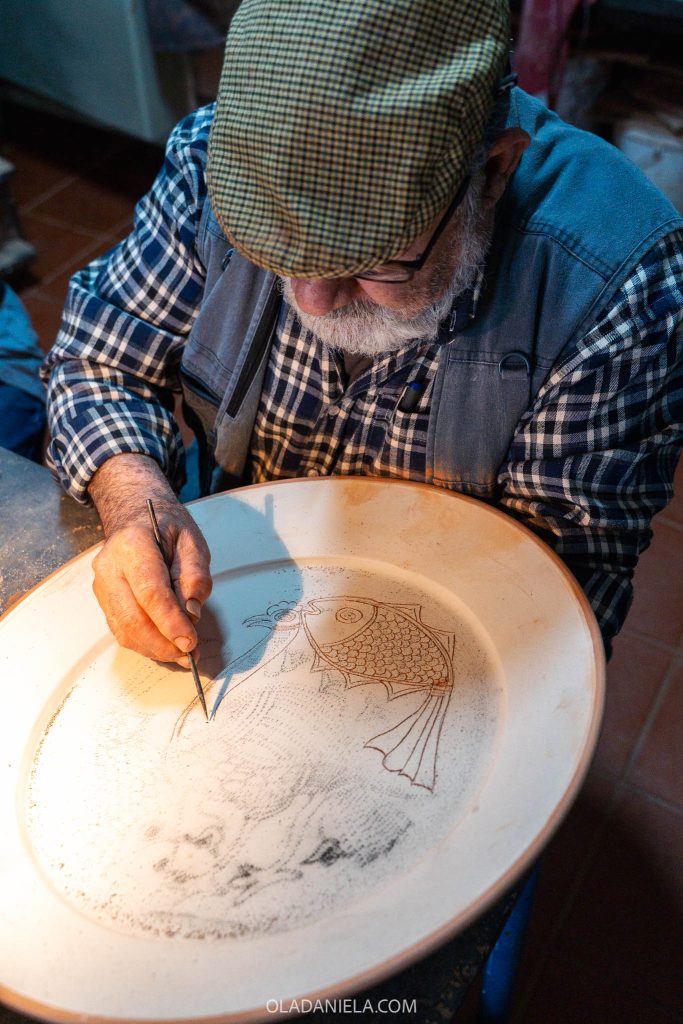
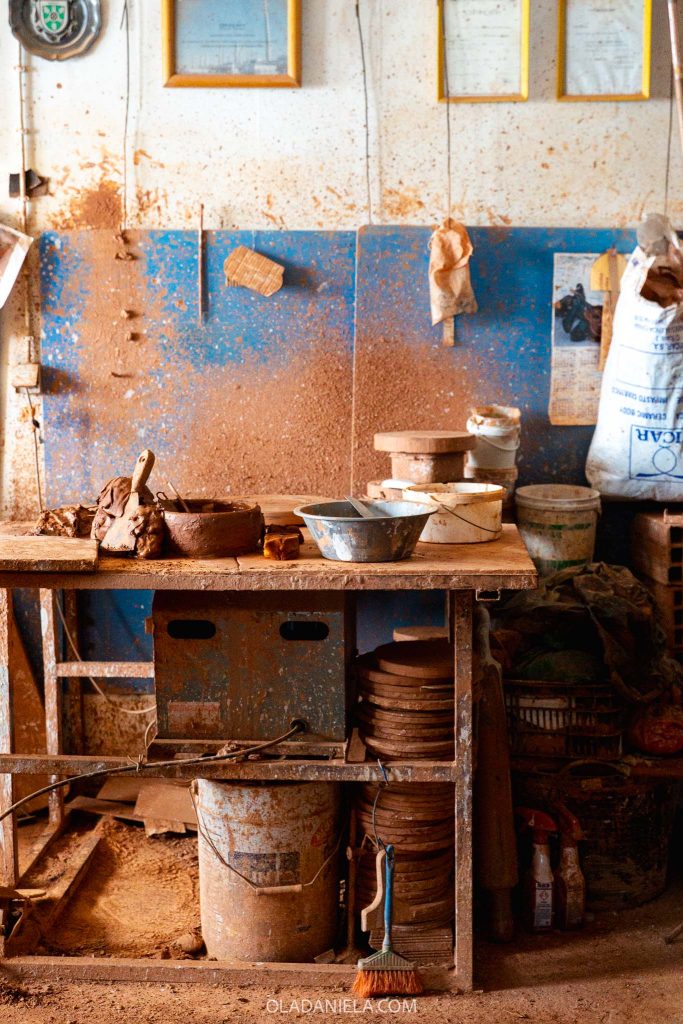
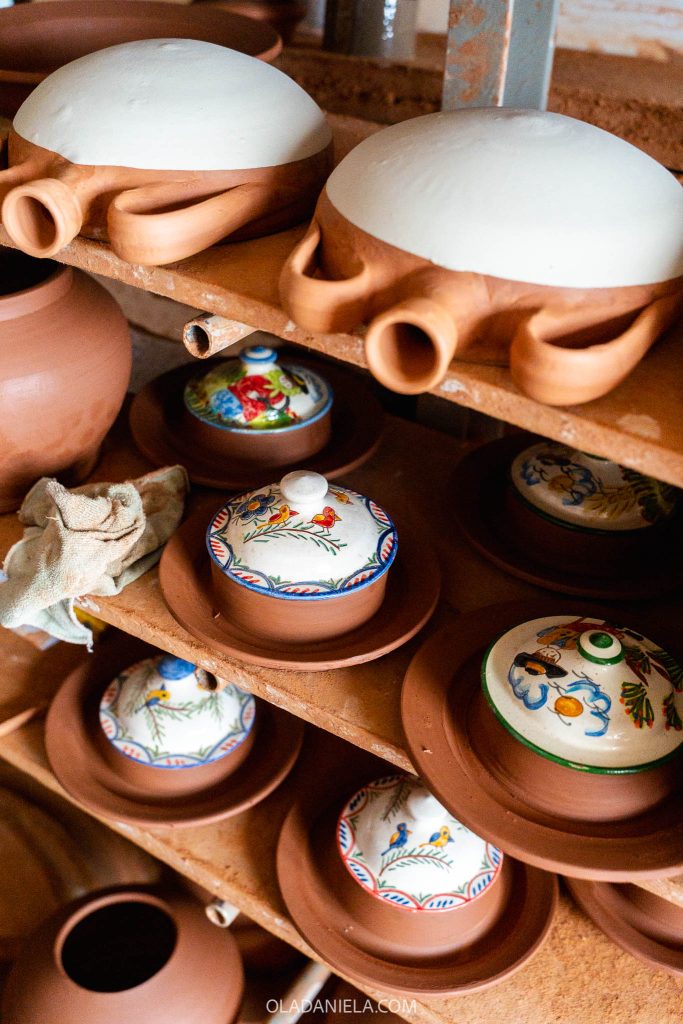
The tradition of clay pottery in Redondo dates back more than 500 years, but while there were once 40 workshops in town producing functional terracotta pieces not there are just a handful of artisans. I’m a huge fan of master Xico Tarefa, a friendly character who has been crafting with clay since he was 13. He has an amazing little studio in the middle of town.
My other favourite stop in Redondo is Olaria Poço Velho where local clay is still processed, like in the old days, and pieces are fired in a traditional wood-fired kiln. The space is a step back in time.
How to visit: Just drop into either shop and studio during opening hours. You can find out more in my guide to the potteries of Redondo.
Tapeçarias de Portalegre – wool tapestries
Textile art is the only way to describe the intricately woven masterpieces hand knotted by the artisans at Tapeçarias de Portalegre. This tapestry studio, which launched in 1948 based on older traditions, is famous for its quality handwomen woollen tapestries. The artisans often recreate real artworks in textile form, drawing on more than 7,000 colours to choose from. Each is woven from the ground up,
How to visit: Portalegre Tapestries has a gallery in Lisbon (Rua Academia das Ciências, 2J, near Bairro Alto) that’s open Tuesday and Thursday afternoons, or you can visit the factory showroom in Portalegre on weekdays – just phone ahead.
Have you met any artisans in the Alentejo that I should know about? Leave a comment…
Keep reading…
- 48 hours in Évora
- Where to shop for Portuguese ceramics
- My 10 favourite Portugal trips in 2024
- Where to shop Portuguese ceramics by weight & pottery outlets
- 18 best places to visit in the Alentejo: prettiest villages, towns and cities
- Portugal’s pottery village: Why you should visit São Pedro do Corval
- Where to shop in Évora: artisans & boutiques
- Where to shop for tiles (azulejos) in Portugal
- The best tile painting workshops in Lisbon, Porto and the Algarve
- 9 places to visit in Portugal this spring
- Bottomless wine and secret cellars: Redondo’s tasca and talha trail

